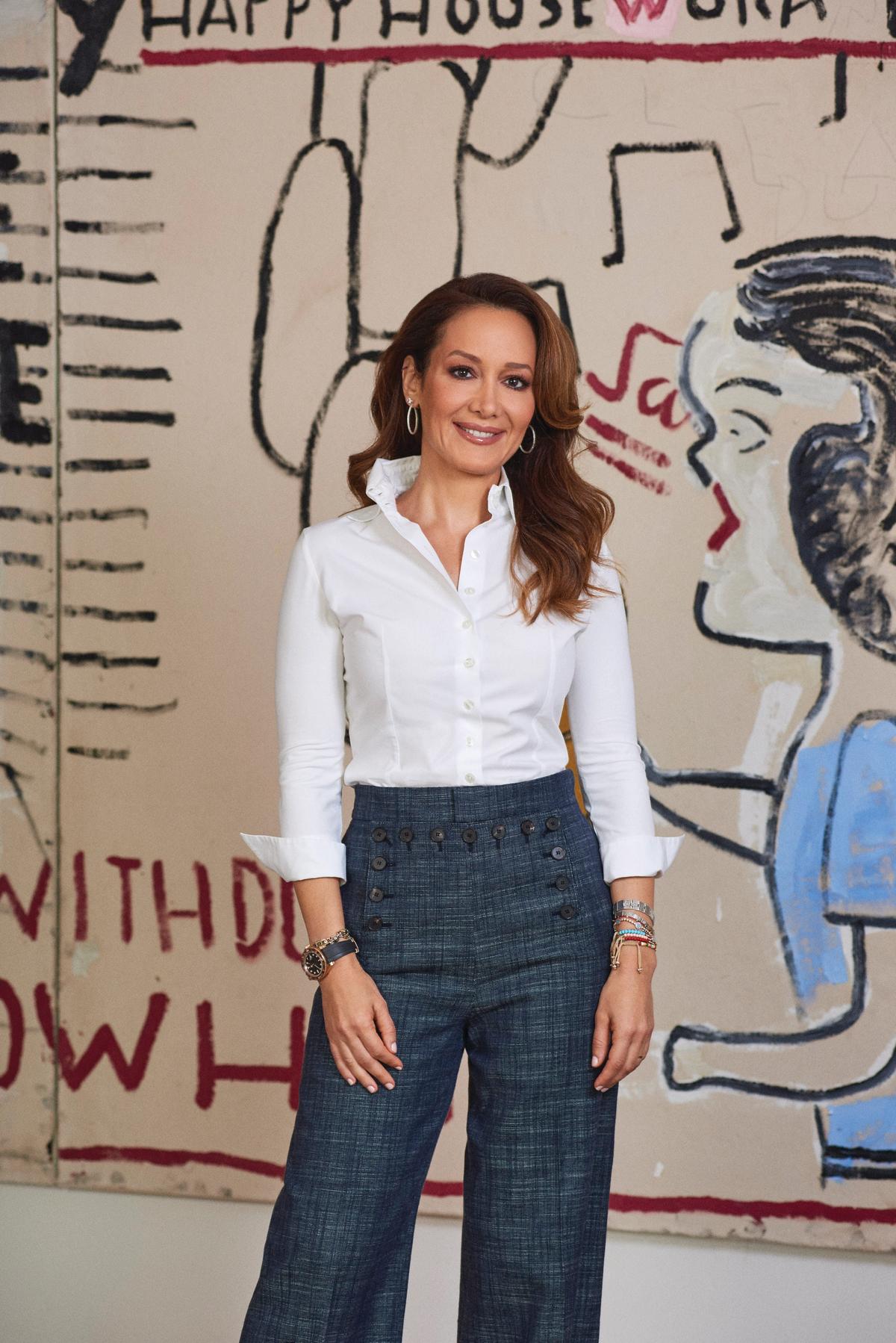Batia Ofer was born in Israel to an art-loving family—her father’s first name is Matisse. Having lived in South Africa, Canada and Israel again, Ofer and her husband, Idan, moved to London eight years ago. “I started collecting seriously about 14 years ago,” says Ofer, who concentrates on post-war and contemporary art. She has a particular interest in German art; her father was a Holocaust survivor and some of her relatives died in Nazi concentration camps in the Second World War. Ofer founded the Art of Wishes gala to support the charity Make-A-Wish, which grants wishes to children with life-limiting or life-threatening conditions, and of which she is a UK patron. On 11 October, Ofer hosted this year’s gala at the Natural History Museum, with a charity auction that included works by Jenny Saville, Peter Doig, KAWS, Mandy El-Sayegh and Rose Wylie.
The Art Newspaper:What was the first work you bought?
Batia Ofer: A photograph by Thomas Struth—The Rothko Chapel, Houston (2007)—in 2007 from Max Hetzler gallery, through an Israeli dealer. I find that work very zen and I love the Rothko chapel; it’s so meditative and the photograph conveys the introspective quality of Rothko’s work.
What is your most recent buy?
A small work by Mandy El-Sayegh called Vitrine—she presented them in Art Basel, but I bought it just before the show from Lehmann Maupin. She’s a very young artist but so talented. Her collages are about how we are immersed in information from the news and social media.
If your house was on fire, which work would you save?
That is such a tricky question! But currently, my favourite work is a David Hammons body print from 1969—he is covered with the American flag. I find it so interesting because of all the current social unrest in the US; this work is from 1969, in the wake of the civil rights movement, but it has such relevance for today.
If money were no object, what would be your dream purchase?
Les Demoiselles d’Avignon (1907) by Picasso, in the Museum of Modern Art in New York. When he made it, it was so radical; other artists thought he was mad. He wasn’t scared to push the boundaries—that’s what I love about art.
What is the most surprising place you have displayed a work?
I placed an Ai Weiwei Coca-Cola vase on top of a Boulle pedestal. You get the juxtaposition in the vase itself, too, because it’s a Han dynasty vase with the Coca-Cola logo—a symbol of consumerism—on it. It gets a lot of attention.
Which artists, dead or alive, would you invite to your dream dinner party?
Sigmar Polke. I love the way that he was ready to try anything and that he didn’t give a lot of interviews; he wanted people to understand his art by themselves. I’d also be interested to hear what it was like to grow up in Germany after the Second World War and how that affected his work.
What’s the best collecting advice you’ve been given?
It’s actually a rule I decided for myself—that I never, ever regret not being able to buy a work. Whatever is supposed to be mine, will be, and whatever is not supposed to be mine just isn’t supposed to be. Also, never follow trends—go with your core and never, ever buy a work of art just because someone tells you it’s a good investment.
What have you missed most during lockdown?
First of all, standing in front of a work of art rather than viewing it on a computer. And secondly, talking to artists, gallerists and other collectors, face to face. You learn so much when you interact with people.
Have you bought an NFT?
I haven’t purchased an NFT just yet, but I have been closely following this area of the art market. It’s been a fascinating development and has received great attention within the art community and the wider public. I decided to commission a new NFT work by the digital artist Brendan Dawes, for the Art of Wishes auction on 11 October, which raised more than £3m. The piece features a mesmerising set of 15,000 colourful strands, each symbolising a wish made possible by Make-A-Wish UK.


